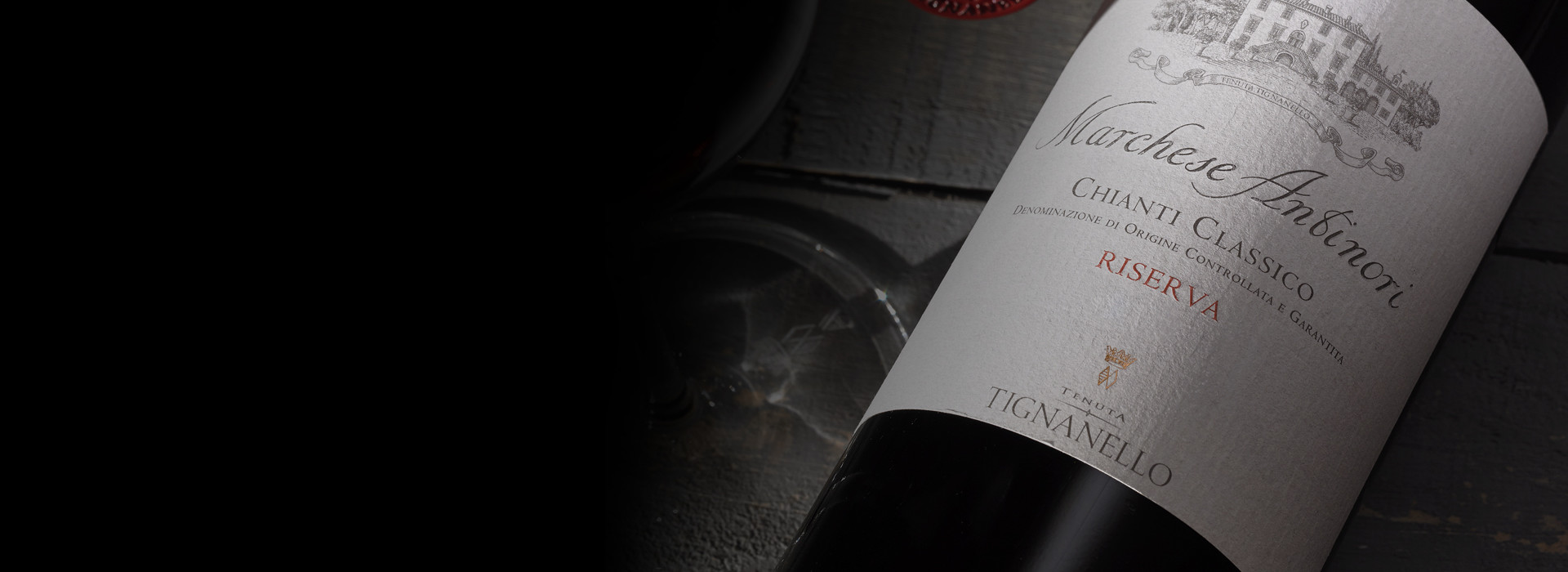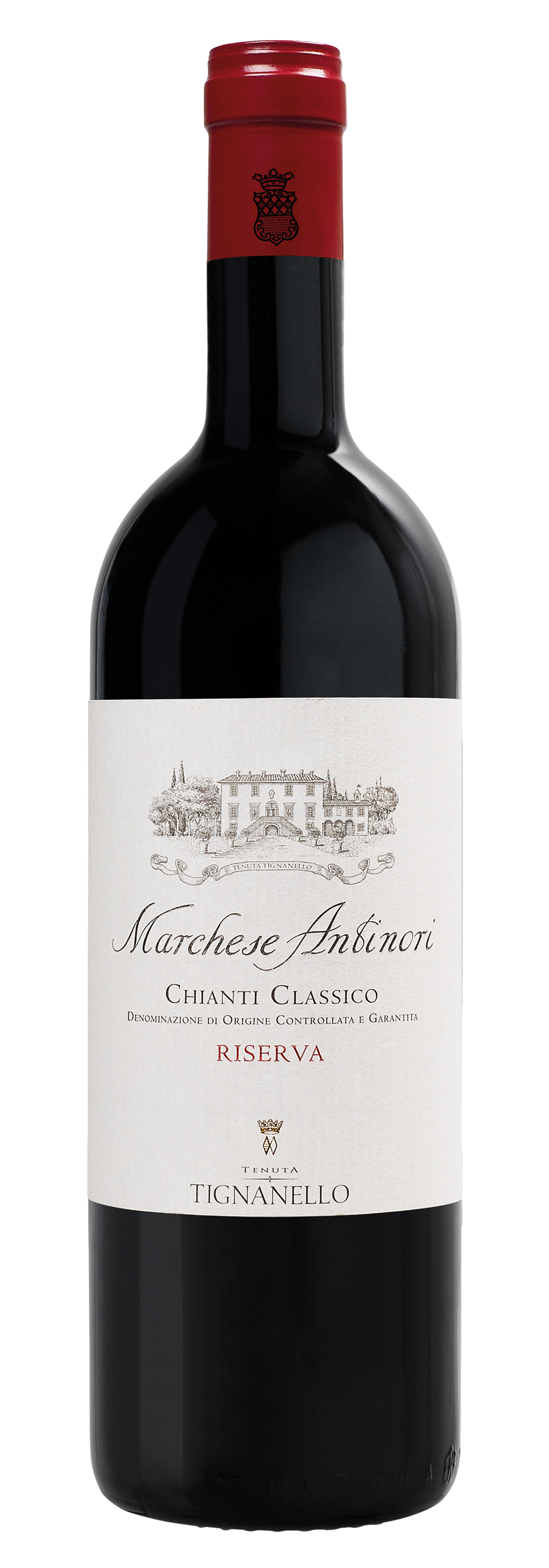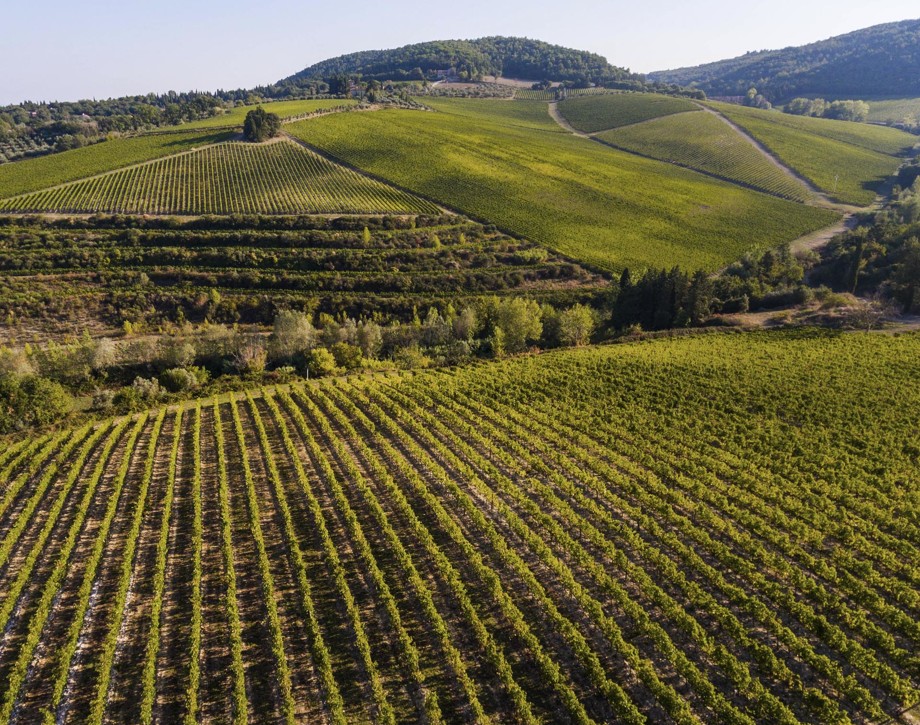Marchese Antinori

Climate
Due to a very rainy and cold autumn and a severe winter with substantial amounts of rain, there was a slight delay in plant sprouting when compared to the average timing of the preceding years. The periods of blossoming and fruit setting were also accompanied by precipitation which, however, did not compromise the normal formation and growth of the grape bunches. In the second half of July, temperatures got very high, but, as opposed to previous years which were very hot, the weather changed again in August, bringing temperatures which were lower than average and frequent rains. September and October were characterized by warm temperatures during the day and cool temperatures at night, with temperature fluctuations which encouraged a perfect ripening of the sangiovese and cabernet sauvignon grapes. The optimal climatic conditions allowed for a very favorable harvest from a qualitative and quantitative point of view, thus guaranteeing excellent grapes. Harvesting of the sangiovese grapes concluded at the end of September, and that of the cabernet grapes finished at the beginning of October.
Vinification
The excellent quality of the grapes and especially the optimal meteorological conditions of the harvesting period positively influenced this vintage’s potential right from the beginning. In addition, the management of the vineyards was fundamental for bringing high quality grapes to the winery for vinification, especially in the case of the sangiovese. After destemming and a gentle pressing, the must was gently transported into stainless steel tanks where, right from the beginning of maceration, it demonstrated great potential both with regards to its polyphenols and its aromas. Pumping over and delestage were carried out in a very gentle manner which respected and preserved the raw material. The musts were separated according to varietal and were very rich in color. The sangiovese must completed alcoholic fermentation while maintaining contact with the skins for approximately 12 days, and the cabernet sauvignon underwent alcoholic fermentation and remained in contact with the skins for a little over two weeks. By the end of the year, the wines spontaneously completed malolactic fermentation in 225-liter second- and third-passage barriques. The wines were then aged for an additional 14 months in small oak barrels. The great potential of the young wines was confirmed by the excellent results of the wood aging process, resulting in a very high quality product which was cared for and tasted barrique by barrique before being bottled. The wine was subsequently left to age in the bottle for another 12 months.
Historical Data
The Tignanello estate is located in the heart of the Chianti Classico production zone, nestled between the valleys of the Greve and Pesa rivers, and extends over close to 800 total acres (319 hectares), some 130 of which (415 hectares) are planted to vines. The vineyards consist principally of the native Sangiovese grape along with such non-traditional varieties as Cabernet Sauvignon and Cabernet Franc. The Marchese Antinori is an historic wine of the Antinori cellars which, since 2011, is produced from the grapes of the Tignanello estate. It is a wine which presents itself as the full expression of the quality and elegance of the Sangiovese of this part of Tuscany.
Tasting Notes
This wine has an intense ruby red color and an aroma characterized by very fruity notes; the conditions during the harvest produced grapes which were able to greatly express their varietal typicity, making the sangiovese very straightforward, rich, and characterized by the intensity of the grapes. The cabernet was able to express all of its strength together with elegance and refinement. On the palate, the wine opens very compactly, with hints of vanilla and chocolate, and with gentle tannins resulting from careful wood aging. The wine is minerally and has a persistent finish. It shows a great potential for extended longevity in the bottle.
Awards
Wine Advocate 92/100 USA

The Wine
This Antinori family’s historic label, since the 2011 vintage Marchese Antinori has been produced with grapes exclusively from the Tignanello vineyard. It’s made almost entirely with Sangiovese with a small percentage of other complementary varieties. A wine that fully expresses the quality and elegance of Sangiovese grapes grown in this area.

Climate
Due to a very rainy and cold autumn and a severe winter with substantial amounts of rain, there was a slight delay in plant sprouting when compared to the average timing of the preceding years. The periods of blossoming and fruit setting were also accompanied by precipitation which, however, did not compromise the normal formation and growth of the grape bunches. In the second half of July, temperatures got very high, but, as opposed to previous years which were very hot, the weather changed again in August, bringing temperatures which were lower than average and frequent rains. September and October were characterized by warm temperatures during the day and cool temperatures at night, with temperature fluctuations which encouraged a perfect ripening of the sangiovese and cabernet sauvignon grapes. The optimal climatic conditions allowed for a very favorable harvest from a qualitative and quantitative point of view, thus guaranteeing excellent grapes. Harvesting of the sangiovese grapes concluded at the end of September, and that of the cabernet grapes finished at the beginning of October.
Vinification
The excellent quality of the grapes and especially the optimal meteorological conditions of the harvesting period positively influenced this vintage’s potential right from the beginning. In addition, the management of the vineyards was fundamental for bringing high quality grapes to the winery for vinification, especially in the case of the sangiovese. After destemming and a gentle pressing, the must was gently transported into stainless steel tanks where, right from the beginning of maceration, it demonstrated great potential both with regards to its polyphenols and its aromas. Pumping over and delestage were carried out in a very gentle manner which respected and preserved the raw material. The musts were separated according to varietal and were very rich in color. The sangiovese must completed alcoholic fermentation while maintaining contact with the skins for approximately 12 days, and the cabernet sauvignon underwent alcoholic fermentation and remained in contact with the skins for a little over two weeks. By the end of the year, the wines spontaneously completed malolactic fermentation in 225-liter second- and third-passage barriques. The wines were then aged for an additional 14 months in small oak barrels. The great potential of the young wines was confirmed by the excellent results of the wood aging process, resulting in a very high quality product which was cared for and tasted barrique by barrique before being bottled. The wine was subsequently left to age in the bottle for another 12 months.
Historical Data
The Tignanello estate is located in the heart of the Chianti Classico production zone, nestled between the valleys of the Greve and Pesa rivers, and extends over close to 800 total acres (319 hectares), some 130 of which (415 hectares) are planted to vines. The vineyards consist principally of the native Sangiovese grape along with such non-traditional varieties as Cabernet Sauvignon and Cabernet Franc. The Marchese Antinori is an historic wine of the Antinori cellars which, since 2011, is produced from the grapes of the Tignanello estate. It is a wine which presents itself as the full expression of the quality and elegance of the Sangiovese of this part of Tuscany.
Tasting Notes
This wine has an intense ruby red color and an aroma characterized by very fruity notes; the conditions during the harvest produced grapes which were able to greatly express their varietal typicity, making the sangiovese very straightforward, rich, and characterized by the intensity of the grapes. The cabernet was able to express all of its strength together with elegance and refinement. On the palate, the wine opens very compactly, with hints of vanilla and chocolate, and with gentle tannins resulting from careful wood aging. The wine is minerally and has a persistent finish. It shows a great potential for extended longevity in the bottle.
Awards
Wine Advocate 92/100 USA

Tenuta Tignanello
The Tenuta Tignanello estate is in the heart of Chianti Classico, in the gently rolling hillsides between the Greve and Pesa river valleys. It extends over an area of 319 hectares (788 acres), of which about 130 (321 acres) are dedicated to vines. Two of the estate’s prized vineyards are on the same hillside, Tignanello and Solaia, on soils that originated from marine marlstone from the Pliocene period rich in limestone and schist.
Soil
Calcareous rocky soils with alberese (marl limestone) and marl.
















